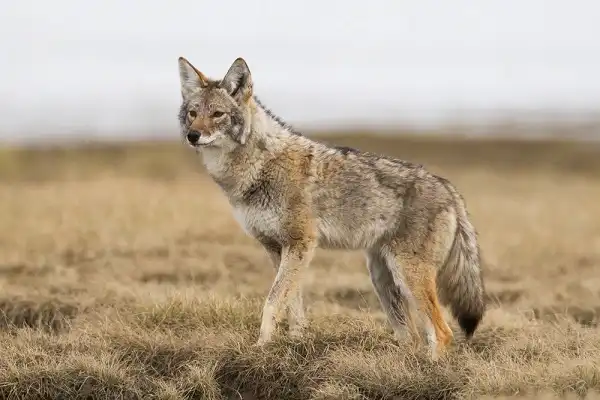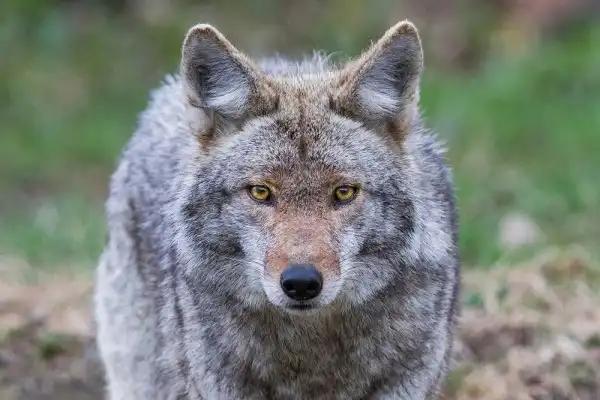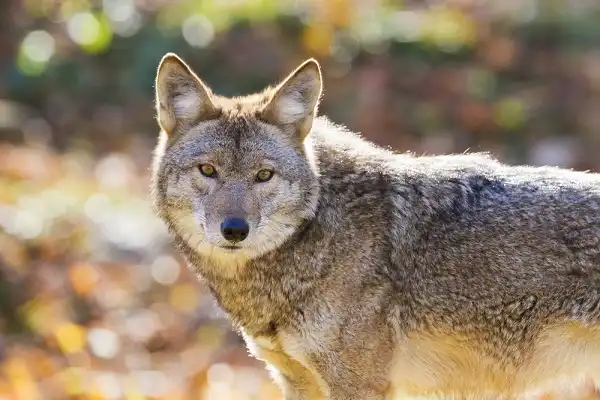The coyote is a cunning and smart animal. It is a survivor and has adapted to living in close proximity to humans. Coyotes are found throughout North and Central America, and their numbers are thought to be on the rise. While they are often considered a nuisance, these versatile canids play an important role in the ecosystem. Here are some interesting facts about coyotes that you may not know!

Coyote Description
Coyotes are medium-sized canids that typically weigh between 15 and 46 pounds. They have thick fur ranging from grayish-brown to yellowish-gray in color, and their coats usually contain a mix of different shades. Typically, coyotes have a long muzzle, pointed ears, short legs, and a bushy tail. Although coyotes look similar to wolves, they are much smaller and less formidable. One of the most remarkable adaptations of coyotes is their ability to survive in urban areas; they have been known to live alongside humans in cities such as Los Angeles and Chicago. This is due to their intelligence, adaptability, and resourcefulness which allow them to find food amidst human activities and development. Coyotes are also known for their vocalizations; they communicate with one another through howls and yips that can be heard over great distances.
Coyote Habitat
Coyotes inhabit a wide range of habitats throughout North and Central America, including deserts, grasslands, forests and mountains. They can also be found in urban areas such as Los Angeles and Chicago. Coyotes are highly adaptable animals that can thrive in almost any type of environment, regardless of human activity. Coyotes typically build their dens in crevices or sheltered locations such as hollowed-out logs, rock formations, or abandoned burrows dug by other animals. Large dens may house multiple coyote families and consist of several chambers connected by underground tunnels. They may also occupy larger dens that were previously used by bears or other large mammals. Coyotes typically occupy territories that range from 15-150 square miles but this can vary depending on the availability of food sources and other resources within the area. As apex predators at the top of their local food chain, they help keep populations of smaller mammal species such as rabbits or mice from becoming overpopulated which helps maintain ecological balance in their environments.
Coyote Diet
Coyotes are highly omnivorous animals that rely on a variety of different food sources for sustenance. Their diet typically consists of small mammals such as rodents, rabbits, and reptiles, but they may also hunt larger prey items like deer or antelope in packs. Coyotes are also known to scavenge for food such as carrion when necessary. Additionally, coyotes also feed on insects, birds, fish, eggs, and fruits. Coyotes are extremely resourceful hunters that employ a wide range of techniques to obtain their food. They stalk their prey in order to ambush them and will often dig up underground burrows to get at animals underneath the surface. Coyotes have even been observed digging through human garbage cans and dumpsters in search of edible scraps! In addition to hunting live prey, coyotes have been known to consume dead animal carcasses left behind by other predators such as wolves or bears. This gives them access to food sources that would otherwise be unavailable and helps supplement their diet when needed.

Coyote Size
Coyotes are medium-sized mammals, ranging in size from 3 to 5 feet long and weighing between 25 to 45 pounds. The common coyote can be distinguished from its relative the wolf by its smaller size and more slender build. Wolves tend to be much larger than coyotes, weighing an average of 75-100 pounds compared to the relatively smaller coyotes at 25-45 pounds. Despite their differences in size, coyotes are often mistaken for wolves due to their similar facial features such as pointy ears and curved muzzles. The smallest subspecies of the coyote is the Island Coyote which can weigh as little as 8 pounds! These diminutive creatures inhabit many of the islands off the coast of California and are thought to be descended from mainland coyotes which were introduced to the islands by humans several centuries ago.
Coyote Lifespan
Coyotes have an average lifespan of 6-14 years in the wild and up to 20 years in captivity. Factors that affect their longevity include predation, disease, and human interference. In the wild, coyotes are most commonly killed by other predators such as wolves or bears. They are also more susceptible to diseases passed on from contact with other coyotes, as well as parasites such as ticks and fleas. Human interference is also a major factor in reducing coyote lifespans due to hunting and trapping practices, vehicle collisions, and habitat destruction. On average, female coyotes live longer than their male counterparts due to the physical demands of protecting their territories and raising their young. Additionally, older females tend to be more successful at raising litters since they have more experience with raising pups than younger ones do. Coyote lifespan varies depending on several factors including diet, exercise level, genetics, and overall health status. Coyotes living in areas with plenty of food sources usually live longer than those living in areas where food is scarce because they are better able to stay healthy and fit due to getting adequate nutrition.
Coyote Behavior
Coyotes are highly adaptable animals capable of surviving in a variety of habitats such as open fields, woodlands, and even cities. They are diurnal creatures, meaning they are active during the day and sleep at night. Coyotes typically live in small family groups consisting of an alpha pair and their pups. The alpha pair generally acts as the leaders of the group while taking care of raising the pups together. Additionally, coyotes engage in playful behaviors such as chasing each other around trees or wrestling with one another similar to dogs playing tug-of-war or fetch! These activities not only help strengthen social bonds between family members but can also increase individual fitness levels since playtime helps keep them physically active. Finally, coyotes rely on scent marking for communication purposes – urinating or defecating on certain objects in order to broadcast messages about themselves such as their identity and reproductive status. By using this method, coyotes can let other individuals know who lives where without having to actually meet face-to-face!

Coyote Speed
Coyote speed is an important factor that contributes to their ability to survive in a variety of habitats. Coyotes have been known to travel up to 20 mph when running and are capable of maintaining this speed for long distances. However, they usually keep a much slower pace when hunting or searching for food. When chasing prey, coyotes can reach speeds of up to 35 mph for short bursts which can be enough to overtake most small animals like rabbits or rodents. They also use tactics such as zig-zagging or doubling back on their path in order to outrun their pursuers and increase the chance of catching them. In addition, coyotes are able to adjust their speed depending on the terrain they are traveling on. For example, if they’re running across open fields or flat ground, they can maintain high speeds for longer periods of time but if they’re navigating rocky terrain or hilly areas, then they tend to slow down in order to avoid injury. Overall, coyote speed is incredibly impressive and is part of what makes them so successful at surviving in the wild. It allows them to catch up with most prey while also helping them evade predators that may be trying to hunt them down! Additionally, coyotes’ impressive stamina means they can cover large distances quickly which helps them find new sources of food and water and stay one step ahead of any potential danger.
Coyote Hunting
Coyote hunting is an important part of the animal’s social and ecological behavior. In order to survive in a variety of habitats, coyotes have developed a number of different hunting strategies that they use to catch prey such as rabbits and rodents. Coyotes hunt either alone or in small packs by surrounding their prey before chasing them until they are too exhausted to run any further. In addition to chasing down their prey, coyotes also employ tactics such as making high-pitched sounds that can mimic those made by their prey in order to lure them closer before being caught. This strategy is particularly effective when relying on surprise rather than speed since it allows the coyote to remain hidden until the last possible moment. Additionally, coyotes often stalk their prey for long distances before attacking which helps wear down their target before finally pouncing for the kill. Coyotes also use scent marking for communication purposes – urinating or defecating on certain objects in order to broadcast messages about themselves such as their identity and reproductive status. Overall, coyote hunting is an intricate process that requires skill and cunning in order for them to be successful predators in nature! They have adapted over time through trial and error in order to develop successful strategies for finding food and ensuring the survival of their species over many generations.

Conclusion
Coyotes are a species of wild dog that has developed impressive hunting and running abilities in order to survive in the wild. In addition, coyotes use scent marking for communication purposes as well as make high-pitched sounds to lure prey closer before being caught. They also take advantage of any cover available while hunting and switch between day and night depending on the season.
Frequently Asked Question

